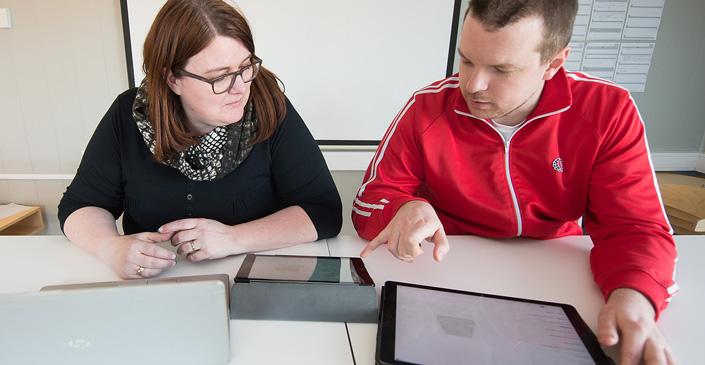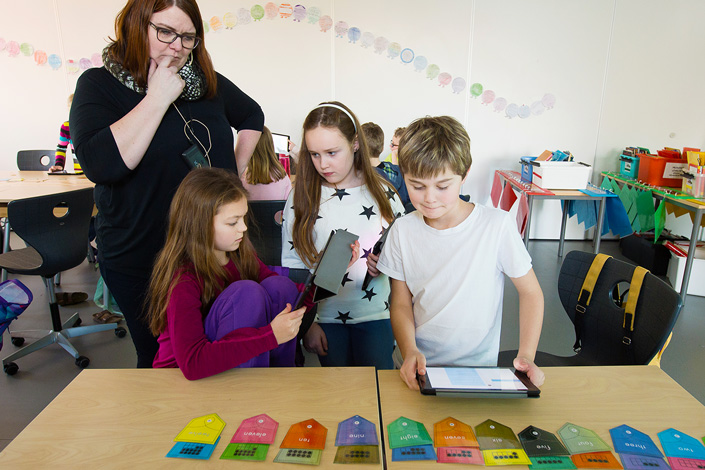Are you rolling out devices in your school, or simply looking for some helpful advice to improve technology in your school? In Showbie’s recent conversations with educators, we’ve discovered some useful tips that help guide you through going 1:1 in your school.
To make it easy, here are the five best tips from educators using iPads and Showbie:
1. Understand that every teacher is different
While it’s easy to assume that all teachers will be excited about getting started with new technology, there are many different levels of both technical expertise and comfort levels, and it’s important to take those into account when you’re rolling out new devices.
“At our school we have 50 teachers aged 23-63, and they all have different kinds of knowledge about technology and education. You need to ensure the training is efficient enough for your spectrum of teachers.”
You need to ensure the training is efficient enough for your spectrum of teachers.
Acknowledging this early on allows you to formulate a plan around how you will train educators, as well as what apps you’ll decide to use. Introducing a digital learning specialist at this time is also useful, because they’ll have the time and energy to devote to ensuring all teachers can adapt to your roll out.
2. Find your technology leaders early on
Even if you don’t have a digital learning specialist at your school, identify the teachers who will be most receptive and passionate about not only adopting new devices and technology, but helping other teachers get the most out of them.

If your school or district has an IT team, you’ll also want their input at this point. Having them on board is important, since they’ll be the lead on problem solving once your devices are implemented.
“If you have your own IT department, they need to be on board, because there is some infrastructure needed to roll out new devices.”
If you’re lucky, you’ll have a tech lead who is so passionate that they’ll be able to help train other teachers on how to use devices and apps, and this will help encourage and introduce teachers who might feel outside of their comfort zone.
3. Train all teachers on devices and apps
Proper training is extremely important. It can be intimidating to start using devices without giving any direction on how to use them properly, and if teachers aren’t being trained on how to use devices and apps, they won’t be able to use them to their fullest potential.

“When I train teachers, they get the ‘teacher’ point of view, but when you mix that with the student point of view, they get a bit frustrated and confused.”
One thing to keep in mind is that while it’s essential to train teachers on devices and apps, well-trained teachers can pass their knowledge along to students. Most students today have been introduced to mobile technology, and as long as the teacher thoroughly understands not only how to use the device, but how to use apps, they should be able to easily demonstrate them to students.
4. Teach students the difference between using technology for learning vs. entertainment
I think using technology like iPads is a leap that is really important to take.
While students of most ages are likely familiar with mobile technology, they’re not always familiar with appropriate ways to use it, especially when it comes to a classroom setting.
Teaching students to use technology responsibly, safely and as a tool to enhance their learning is not achieved overnight, but it’s something to keep in mind as you start introducing them to 1:1 devices as educational tools.
“If you show kids that it’s for their education, and teach them how to use it as a tool rather than just hand it to them and say ‘Here, this is where everything will go’, I think using technology like iPads is a leap that is really important to take.”
Digital citizenship and digital literacy are becoming increasingly important in education, and incorporating them into your classroom can drastically help the success of your roll out.
Educator teacher Kirstin McGinnis discusses the importance of digital literacy in this blog post about going 1:1 in kindergarten.
5. Be open to teacher and student suggestions
If you’ve chosen apps for your roll out, be open to teachers using these apps in ways that best suit their teaching style, subject matter, grade level and comfort level. It goes without saying that a language teacher will likely use their classroom technology differently than a math teacher, and each one can find success in different ways.

“Not every teacher is using Showbie the same way, and that’s perfectly ok. Some are using it to push resources out to kids, some are simply collecting and giving feedback. It’s pretty incredible that they’re using the same app for all these different purposes.”
Additionally, encourage your teachers and students to learn more about apps and classroom technology. If they’re interested in trying out a new or different app, do some research (especially relating to its privacy), give them a trial, and then collect feedback once they’ve had a chance to really use it. You never know what apps you might find!
To learn more about how to successfully rollout 1:1 iPads, check out Showbie’s newest case study, ‘How the Drammen Kommune District Successfully Went 1:1’.


